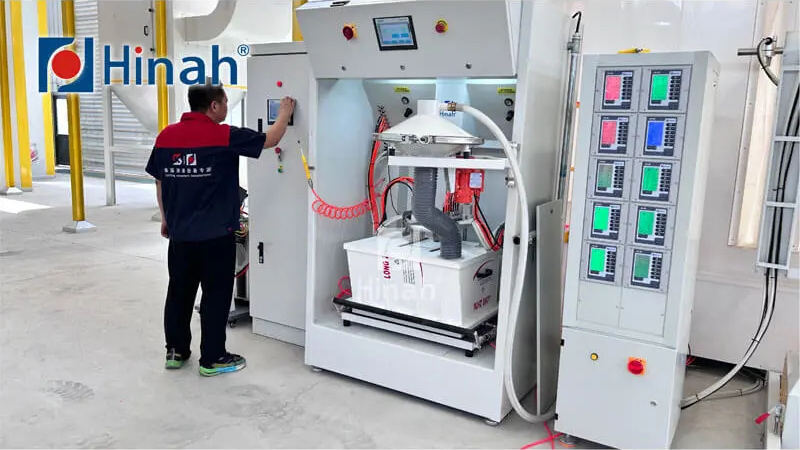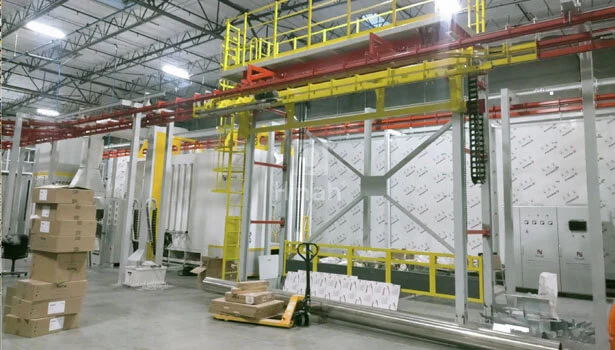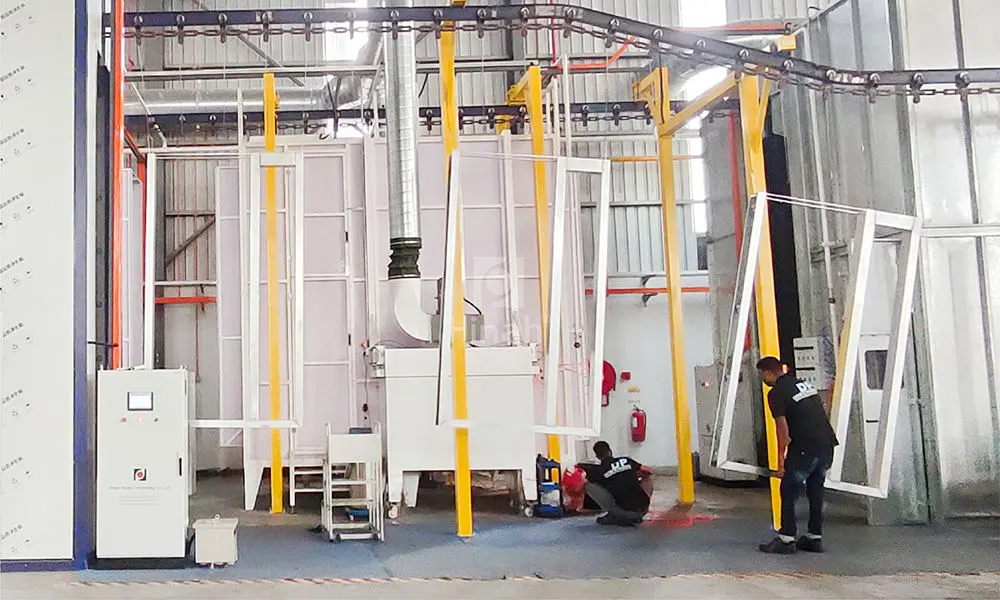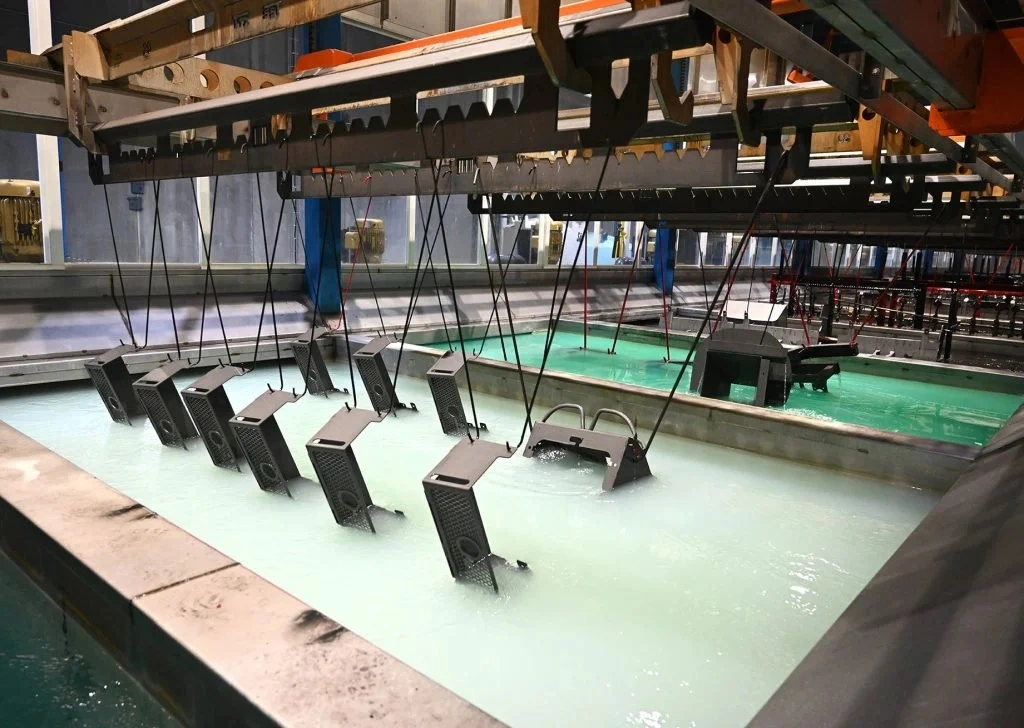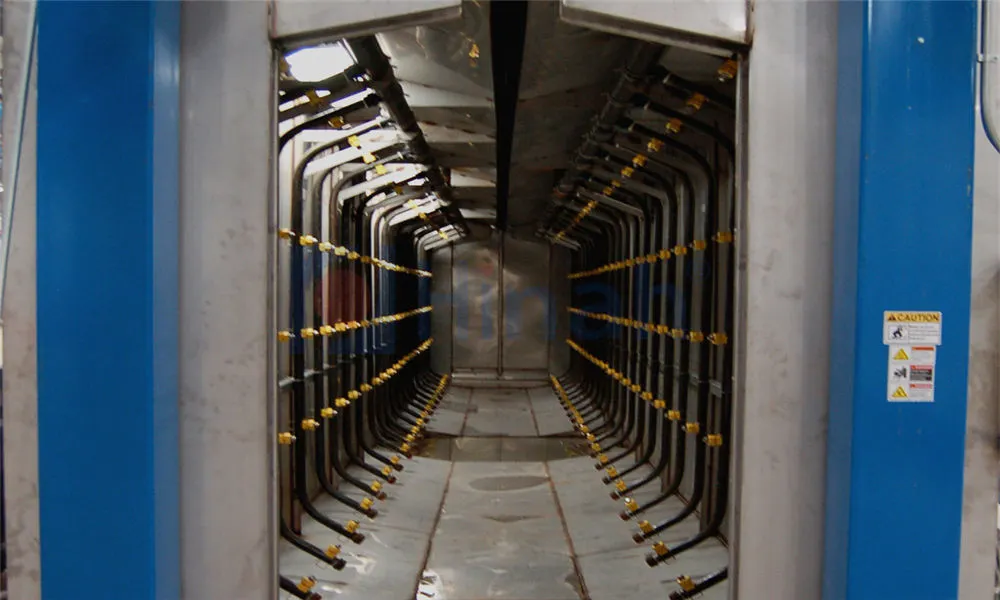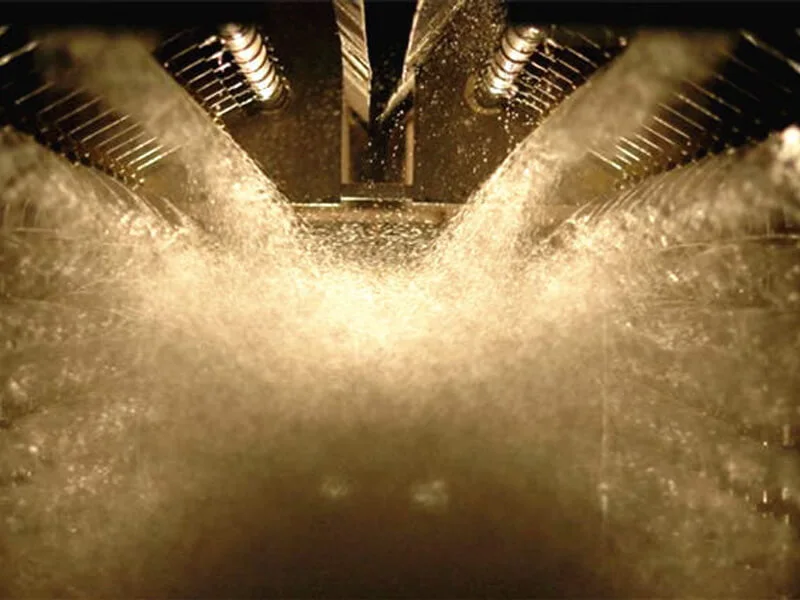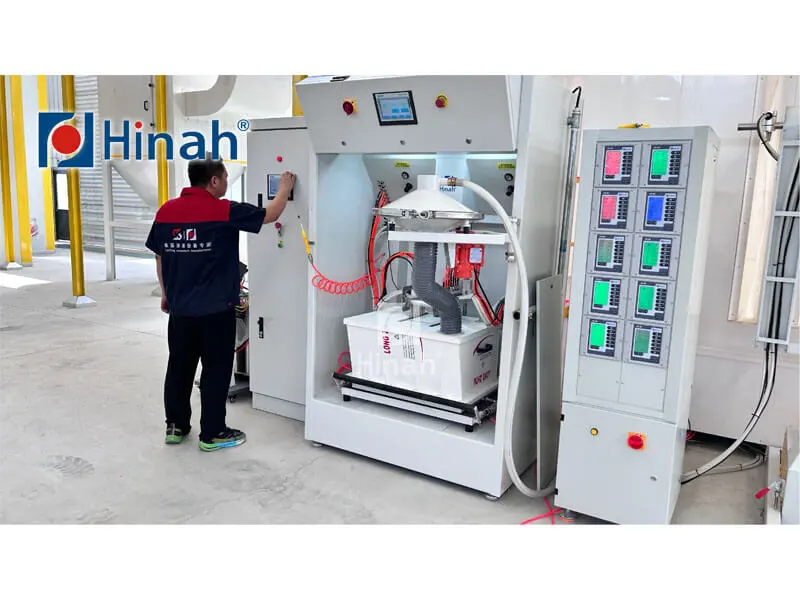In the world of industrial finishing, the seamless application of powder coating is paramount. While much attention is given to spray guns, powder chemistry, and curing ovens, the true workhorse of any efficient operation is often overlooked: the paint line conveyor system. This intricate network of chains, belts, and tracks is the circulatory system of the finishing line, silently dictating the pace, quality, and overall productivity of the entire process. For professionals in international powder coating, understanding the nuances of these systems is not just beneficial—it's critical to achieving a flawless, durable finish on everything from automotive components to architectural aluminum.
This article delves into the core aspects of paint line conveyor systems, exploring their types, critical design considerations, and the common challenges that operators face, providing a comprehensive overview for industry veterans and newcomers alike.
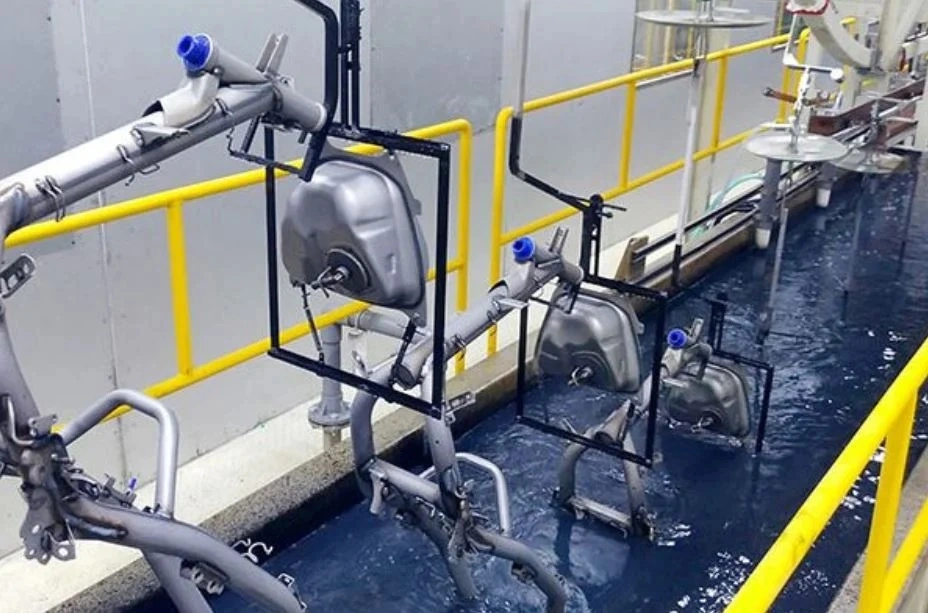
The Backbone of Finishing: Understanding Paint Line Conveyor Systems
At its core, a paint line conveyor system is a continuous mechanical handling apparatus designed to transport products through the various stages of the powder coating process. These stages typically include pre-treatment (cleaning, rinsing, phosphating), drying, powder application via electrostatic spray guns, and finally, curing in a high-temperature oven.
The primary function of the conveyor is to present each part to the application equipment in a consistent, repeatable manner, ensuring uniform coverage. Furthermore, it must withstand harsh environmental conditions, including exposure to moisture, chemicals, heat, and airborne powder particles. The reliability of the entire paint line conveyor system directly impacts line speed, transfer efficiency, and ultimately, the bottom line. A well-designed system minimizes touch labor, reduces rework, and maximizes throughput.
Types of Conveyor Systems in Powder Coating Lines
Not all products are created equal, and neither are the conveyors that transport them. The choice of system is heavily influenced by factors such as part size, weight, geometry, and production volume. The most common types include:
Overhead Power & Free (P&F) Conveyors: This is arguably the most versatile and widely used system in medium to high-volume powder coating facilities. P&F systems consist of two parallel tracks: a power track with a continuously moving chain and a free track that carries the load. Carriers can be disengaged from the power chain and stopped, accumulated, or switched to different lines. This allows for asynchronous movement, making it ideal for varying process times (e.g., allowing heavier parts more time in the oven) and facilitating easy loading and unloading.
Overhead Monorail Conveyors: In this simpler system, carriers are directly attached to a single, continuously moving trolley chain. Parts follow a fixed path at a constant speed. While less flexible than P&F, monorail systems are often more economical and are perfectly suited for high-volume production of similar parts where process times are consistent.
Belt-on-Board / Belt-on-Edge Conveyors: These systems are typically used for smaller, lighter parts that can be placed directly on a continuous belt. They are common in applications like coating small hardware, consumer products, or components hung on a tree. They are generally less expensive to install but offer less flexibility for accumulation and switching.
Floor Conveyors: Including chain-drag and slat-type systems, floor conveyors are designed for extremely heavy or bulky items, such as truck frames, large machinery, or industrial cabinets. The conveyor path is on the factory floor, eliminating overhead weight constraints.
Critical Design Considerations for Optimal Performance
Designing or selecting a paint line conveyor system requires careful forethought. Several factors must be harmonized to ensure peak performance:
Load Capacity and Hanging Style: The system must be engineered to support the maximum weight of the products, plus the weight of the hooks and carriers. The method of hanging parts is crucial for maximizing transfer efficiency and minimizing powder waste. Parts should be oriented to allow for effective grounding and to prevent "faraday cage" effects where powder struggles to reach recessed areas.
Line Speed and Control: The conveyor speed must be precisely calibrated to ensure parts spend the exact required amount of time in each zone, especially the spray booth and curing oven. Modern systems use variable frequency drives (VFDs) for smooth and precise speed control.
Flexibility and Future-Proofing: A good system design incorporates flexibility for future changes. This could include extra power and free track for future expansion, easy programmability for new part recipes, and zones that can be easily bypassed if needed.
Cleanability and Maintenance Access: Given the abrasive and contaminating nature of powder overspray, the conveyor design should minimize flat surfaces where powder can accumulate. Easy access for regular cleaning and maintenance is a non-negotiable feature to prevent particulate contamination of finished parts.
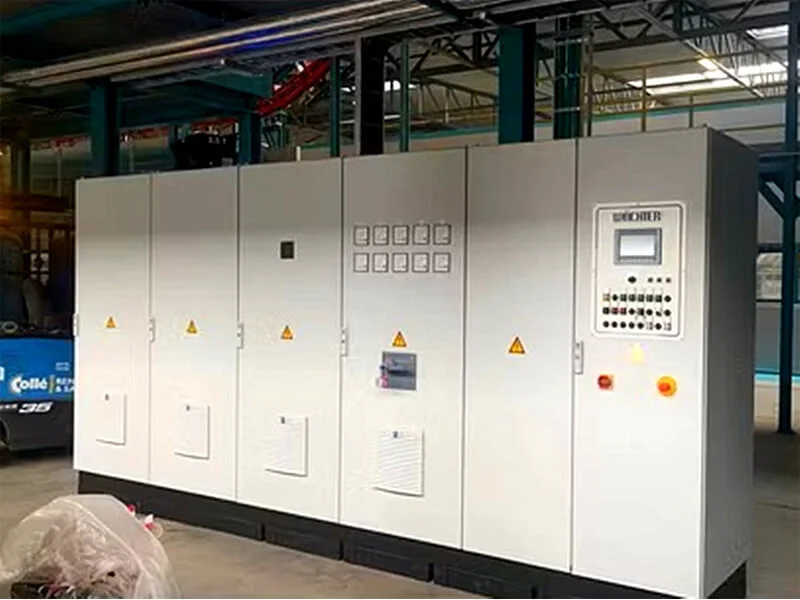
Navigating Common Challenges with Paint Line Conveyors
Even the most robust paint line conveyor system can encounter issues. Recognizing and preventing these common problems is key to maintaining uninterrupted production.
Powder Build-Up and Contamination: Overspray powder inevitably accumulates on conveyor chains, trolleys, and tracks. If not regularly cleaned, this powder can bake onto the components in the curing oven and eventually break off, falling onto freshly coated parts and creating contamination defects. Implementing a rigorous cleaning schedule using compressed air and dedicated brush systems is essential.
Poor Grounding: Electrostatic powder application requires an excellent electrical ground path from the gun, through the part, and back to the system. Paint line conveyor systems often develop grounding issues due to paint build-up on hooks, worn trolley wheels, or inadequate grounding brushes. This results in poor powder transfer efficiency, wrap-around, and uneven film build. Regular hook stripping and maintenance of grounding points are critical preventative measures.
Mechanical Wear and Tear: The constant movement through high-heat ovens and chemical pre-treatment washes puts immense strain on mechanical components. Chains can stretch, trolley wheels can wear down, and lubricants can degrade. This leads to misalignment, jerky movement, and eventual failure. A strict preventive maintenance program, including regular lubrication with high-temperature grease and periodic inspection of all moving parts, is vital for longevity.
Baking Lubricants and "Drop-Off": Using incorrect lubricants can be disastrous. Standard greases will melt and vaporize in the curing oven, potentially vaporizing onto parts and causing fish eyes or craters in the finish. Furthermore, the burnt residue can create a gritty substance that drops onto parts. It is imperative to use only high-temperature, food-grade, or synthetic lubricants specifically designed for paint line conveyor systems.
Synchronization and Control Issues: In complex power and free systems, programming errors or sensor malfunctions can lead to jams, incorrect routing, or parts spending too much or too little time in a process zone. Regular calibration of sensors and thorough testing of new program recipes can mitigate these software and control-related problems.
Maintenance Best Practices for Longevity and Uptime
Proactive maintenance is the single most important factor in maximizing the uptime and lifespan of a paint line conveyor system. This goes beyond simple reactive repairs.
Daily/Weekly: Visual inspections for unusual wear, checking lubrication levels, and cleaning excessive powder build-up from critical areas.
Monthly/Quarterly: A more thorough inspection including checking chain tension, verifying the alignment of tracks and drives, testing the calibration of all sensors and switches, and inspecting and cleaning grounding brushes.
Annually: A full system shutdown for comprehensive maintenance. This includes stripping all hooks of built-up coating, replacing heavily worn components like trolley wheels, inspecting structural integrity, and overhauling drive motors and gearboxes as per manufacturer recommendations.
Investing in a detailed maintenance schedule prevents costly unplanned downtime and ensures the consistent, high-quality finish that customers demand.
The Future: Smart Conveyor Systems and Industry 4.0
The future of paint line conveyor systems is intelligent. Industry 4.0 principles are being integrated, transforming conveyors from dumb movers into data-rich networks. Smart carriers with RFID tags can communicate a part's identity and specific coating requirements to the spray guns and oven controllers, automatically adjusting parameters for a perfect finish every time. Predictive maintenance, powered by vibration and temperature sensors on drive units, can alert operators to potential failures before they occur, further enhancing efficiency and reducing downtime in modern powder coating operations.
The paint line conveyor system is far more than just a means of moving parts. It is a complex, integral component that dictates the rhythm and quality of the entire powder coating process. From selecting the right type of system to implementing a ruthless preventive maintenance regimen, understanding and respecting this backbone of the finishing line is essential for any operation seeking to achieve superior quality, maximum efficiency, and unparalleled profitability in the competitive international market. By addressing its common challenges head-on, manufacturers can ensure their conveyor system remains a reliable partner in production for years to come.


